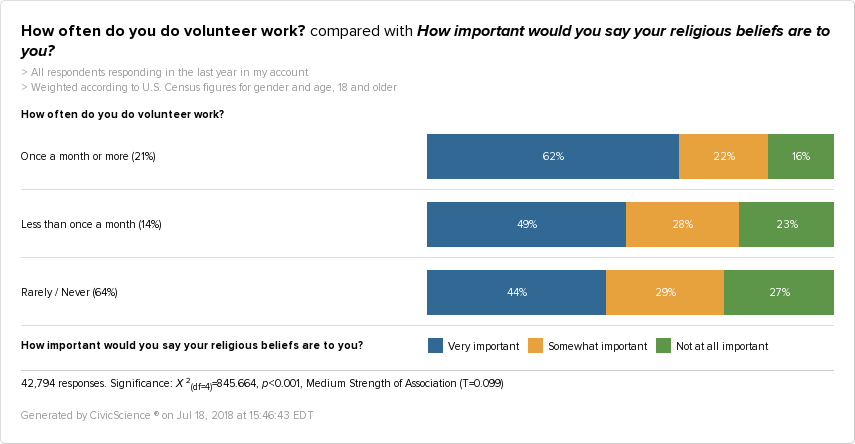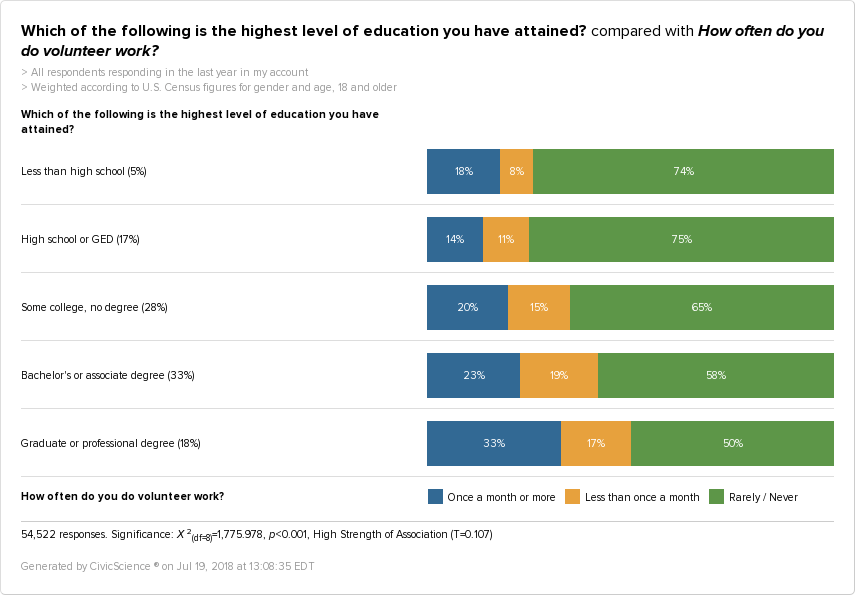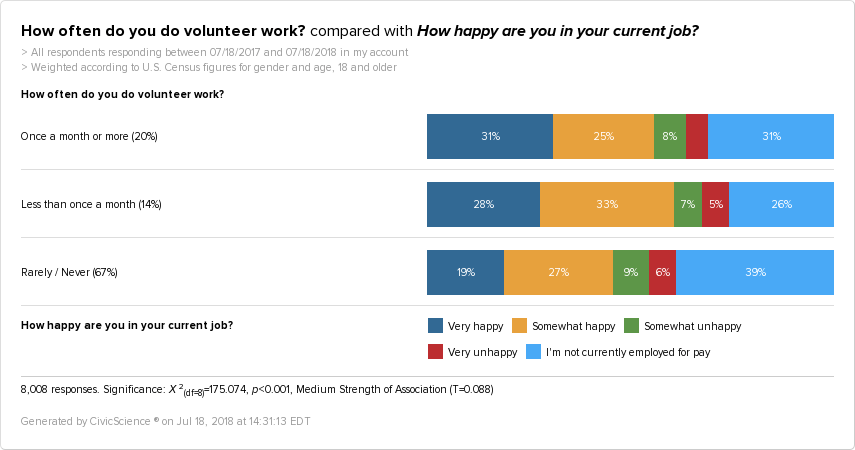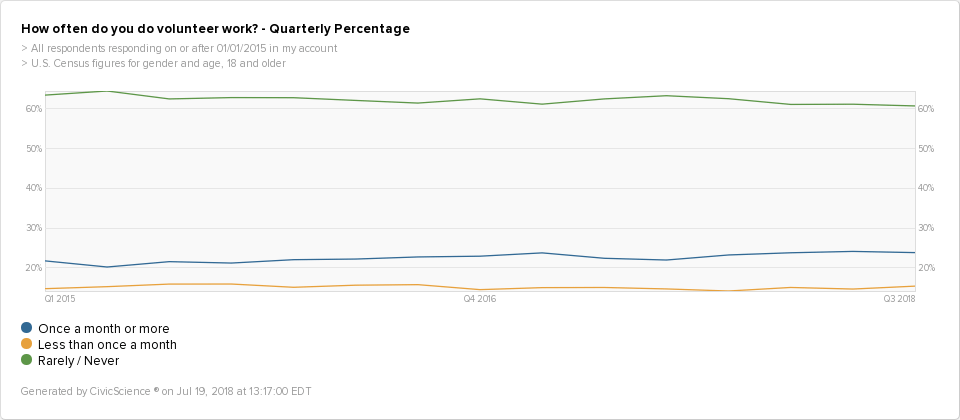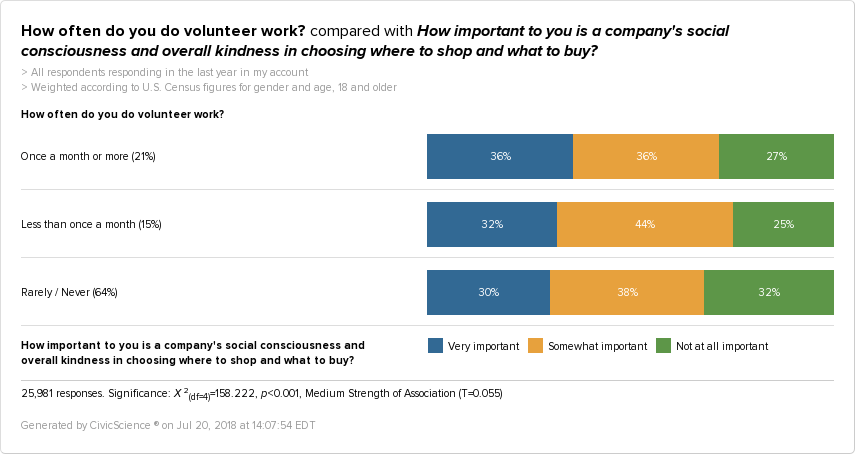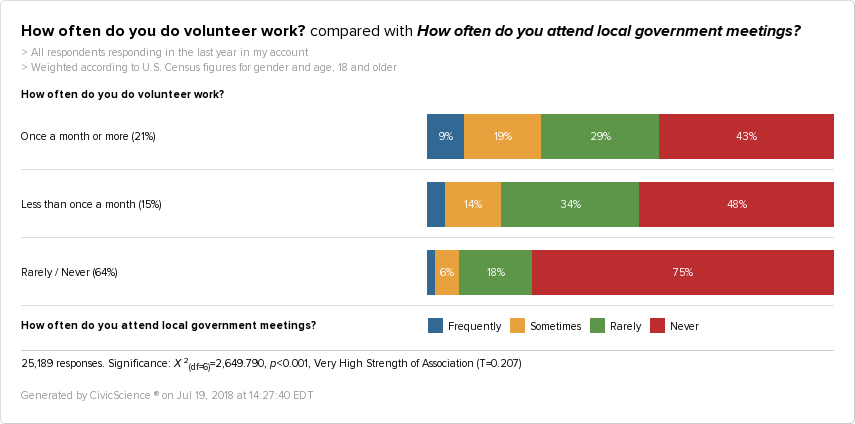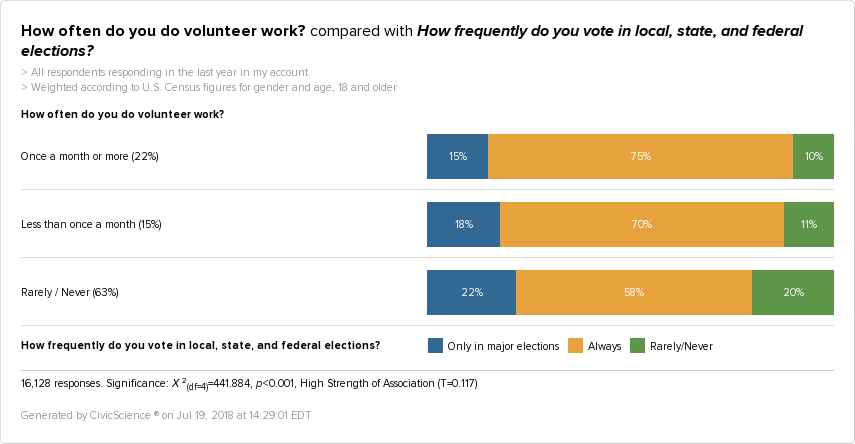The Gist: Doing good for others has a marked impact on the way we feel about ourselves, as well as our ability to create greater social change.
There’s the classic adage that it’s better to give than to receive, or that helping others is really helping yourself. We thought we’d take a look at the cliché to see if we could parse out the truth.
Just under a quarter of US adults volunteer once a month or more, and 62% of adults never volunteer.
What’s the profile of a person who volunteers frequently?
Stewardship often goes hand in hand with some form of faith, and our numbers confirm that.
The more religious beliefs play a role in someone’s life, the more frequently they volunteer. Level of education may come into play as well.
People with graduate or professional degrees are most likely to volunteer at least once a month or more.
When it comes to age, gender, and parental status, the only standout data is that grandparents are slightly more likely to volunteer at least once a month. The rest of the volunteer population is an even spread across age and gender.
People who frequently volunteer don’t all look the same but do they feel similar?
Let’s start with the basics, comparing the current level of happiness with volunteering.
Here, we can see a larger trend. The more you volunteer, the ever so slightly more likely you are to be “Very Happy.”
What about job satisfaction?
People who volunteer once a month or more much more likely to be “Very happy” with their current job than those who rarely or never volunteer.
So it would seem there’s a link between day to day happiness and volunteering, as well as workplace satisfaction and volunteering. Companies should take note that organizing employee volunteer days doesn’t just improve its image, helps retain employees.
People who volunteer don’t just do good, they think they look good.
Frequent volunteers are more likely to consider themselves much more physically attractive than their peers. The less you volunteer, the less attractive one might see oneself.
So it seems that volunteering somehow relates to the way people feel about themselves–they might feel happier at home and work, and even think they look better. The cliche proves to be true–helping others helps yourself.
That being said, why aren’t more people doing it?
Since 2015, populations that volunteer in some capacity have barely moved. This comes as a surprise given today’s cultural climate, where activism, at least online, thrives. This isn’t about party lines or particular political issues, respondents aren’t more likely to lean left or right. Folks across the political spectrum are marching, donating money, and sharing content online that would seem to go hand in hand with volunteering–but it doesn’t. People aren’t volunteering more. We know consumers are becoming more socially, politically and environmentally conscious, but we also know consciousness doesn’t always equal action.
Unsurprisingly, people who frequently volunteer over-index in all of the above behaviors.
They’re more likely to adjust their lifestyles to help the environment.
They’re more likely to engage with socially conscious brands.
They’re also more likely to get involved in politics at a local level.
Finally, the more frequently a person volunteers, the more likely he or she is to vote in elections.
What does this all mean? Nowadays we see a lot of people talking, online, in person and on TV about taking action to create social change for all types of causes. However, as we’ve tracked here, people say one thing, and then do nothing.
Over the years, volunteers as a population haven’t grown, but it’s clear to see this group is pivotal as a tool for social change and authentic engagement.
So, if you’re looking to create change, look to the people who aren’t being paid a cent.

